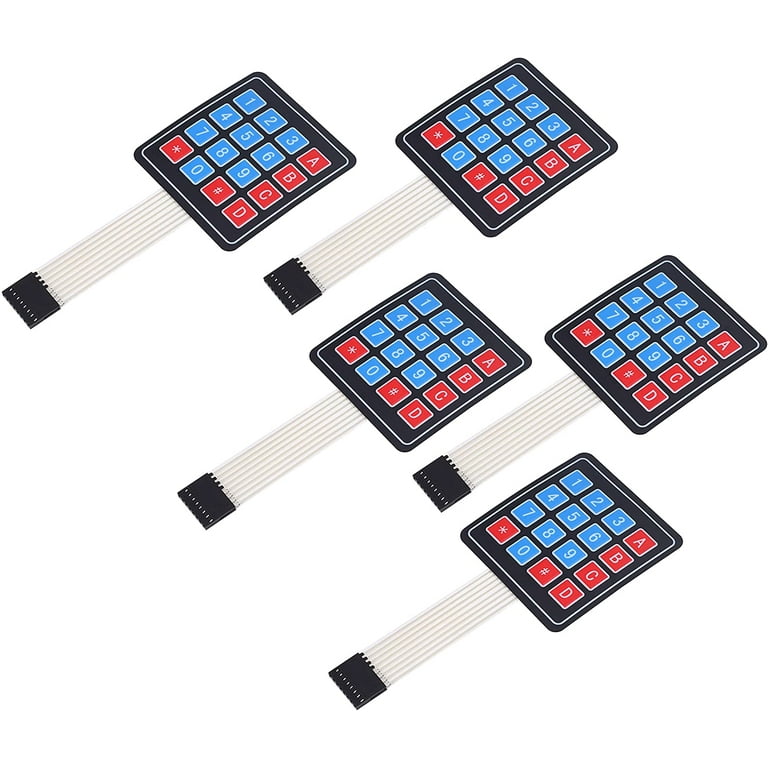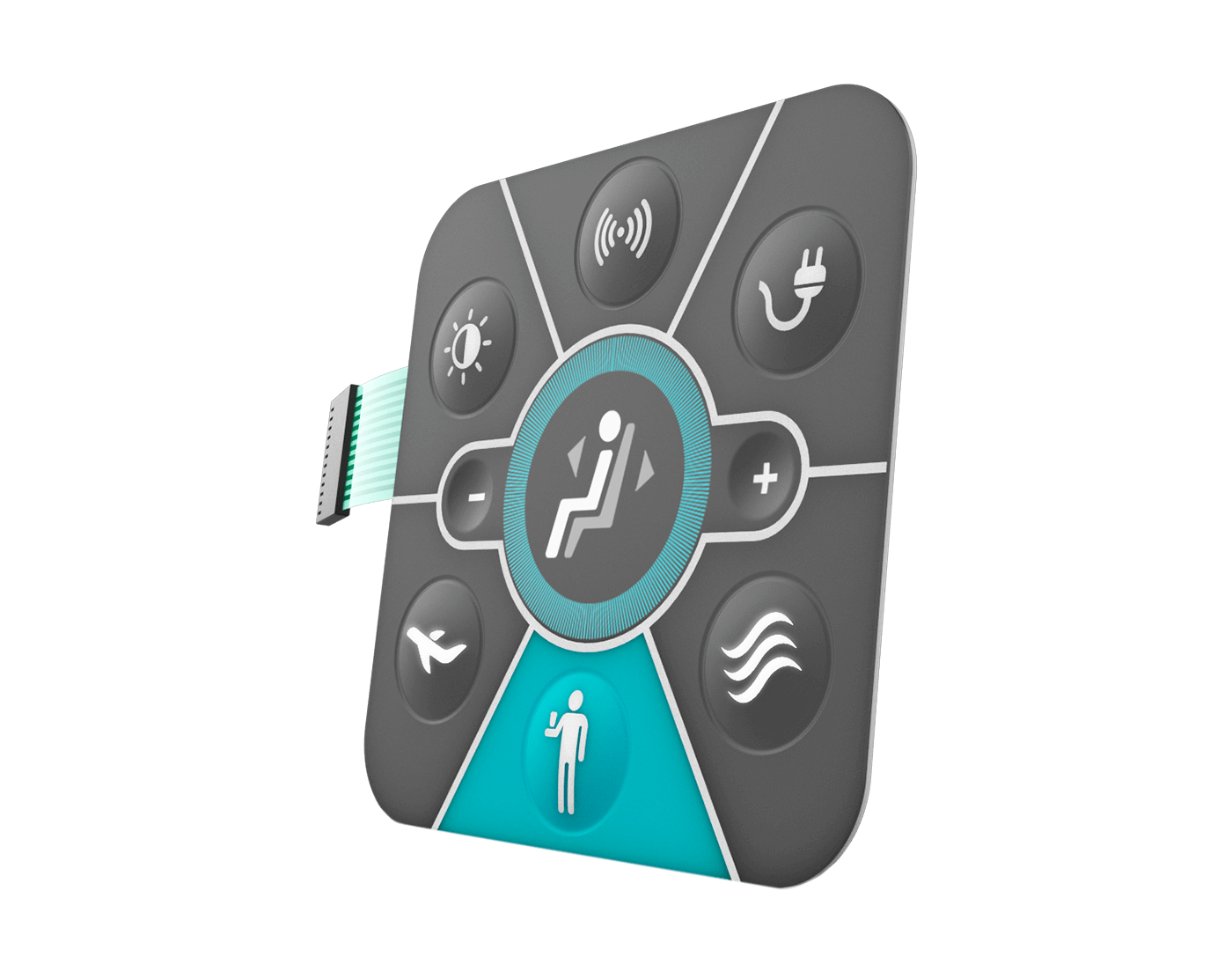Top-Tier Membrane Switch Manufacturer with Quality Accreditation
Top-Tier Membrane Switch Manufacturer with Quality Accreditation
Blog Article
Recognizing the Value of Membrane Switch in Modern Electronics and Their Applications
Membrane switches over function as a crucial component in modern electronics, using an efficient interface for customer communication. Their customizable and lightweight nature makes them appropriate for an array of applications across diverse markets. Recognizing their essential elements and benefits can provide insights into their expanding importance. As technology continues to advance, the development of Membrane switches over questions regarding their future applications and layout technologies. What lies in advance in this dynamic field?

What Are Membrane Buttons?
Membrane buttons are necessary components in modern-day electronic devices, functioning as interface that help with communication between devices and individuals. These switches are composed of numerous layers, including a visuals overlay, a sticky layer, and a circuit layer, every one of which collaborate to create a practical and sturdy interface. The layout permits a level, low-profile option that can be tailored concerning dimension, shape, and visual look, making them suitable for different applications, from customer electronics to medical gadgets. The responsive feedback supplied by Membrane switches improves customer experience, while their resistance to dust and wetness makes them ideal for challenging settings. Membrane switches can integrate attributes such as backlighting and published graphics, better expanding their usability. Their versatility and effectiveness make them a recommended choice in industries where dependability and simplicity of usage are extremely important, ultimately adding to the seamless operation of contemporary digital tools.
Key Components of Membrane Switches
While various elements add to the performance of a membrane layer button, three main layers play considerable functions in its style and procedure. The leading layer, commonly made from a sturdy polymer, acts as the user interface for customer communication, usually featuring printed graphics and icons. Beneath this is the spacer layer, which keeps the essential range in between the leading layer and the circuit layer. This spacer layer assurances that the switch activates only when pushed, protecting against unintended inputs. The circuit layer consists of conductive traces that complete the electrical circuit when the leading layer is dispirited. These traces can be made from different materials, including copper or silver. With each other, these parts create a trusted and durable gadget that is compact and versatile, ideal for a variety of electronic applications, from house devices to medical tools. Recognizing these crucial components is essential for valuing the overall capability of Membrane buttons.
Benefits of Using Membrane Switches

Membrane Switch Production Process
Recognizing the Membrane button manufacturing procedure reveals the detailed steps entailed in producing these vital components. The procedure generally starts with the design stage, where specifications and designs are developed utilizing specialized software program. Following this, the graphic overlay is published on an adaptable substrate, commonly using high-resolution printing methods to guarantee clarity and precision.Next, the sticky layers are applied, which serve to bond the different parts together. The circuit layers, made from conductive inks or materials, are after that published onto a separate substrate. These layers are meticulously straightened and laminated to produce a useful switch.After assembly, the switches go through examining to verify functionality and toughness. Quality control steps are carried out throughout the procedure to recognize and rectify any type of flaws. Ultimately, the finished Membrane buttons are packaged and prepared for distribution, prepared to satisfy the demands of contemporary digital applications.
Applications of Membrane Switches in Numerous Industries
Membrane buttons are increasingly utilized throughout numerous sectors, specifically in clinical devices and customer electronics. In the medical field, they offer dependable control interfaces for devices that require precise operation. Similarly, in customer electronic devices, these buttons improve individual interaction by offering responsive and sleek user interfaces.
Medical Tools Control
Many contemporary medical tools use Membrane buttons for structured operation and boosted individual interaction. These buttons supply a trusted, long lasting interface for a selection of applications, consisting of diagnostic devices, patient surveillance systems, and medical tools. Their customizable layouts enable for specific designs that can accommodate the one-of-a-kind requirements of medical care experts, ensuring instinctive navigation and reliable access to essential features. Additionally, Membrane buttons are immune to pollutants, making them ideal for sterilized settings. The tactile responses they provide can boost user self-confidence, decreasing the risk of mistakes throughout important clinical treatments. In general, the assimilation of Membrane buttons in medical equipment considerably adds to improved operational performance and client security in medical care settings.
Consumer Electronic Devices Interfaces
In the domain of consumer electronics, Membrane buttons play an important duty in enhancing user interfaces throughout a vast range of tools. These buttons are essential to items such as remote controls, microwaves, and gaming consoles, supplying a user-friendly and effective interface. Their layout enables a seamless combination of graphics and capability, enabling producers to produce streamlined, modern-day visual appeals without jeopardizing usability. Membrane switches are likewise understood for their longevity, frequently withstanding extensive use and direct exposure to numerous environmental conditions. Furthermore, they can integrate features like backlighting and tactile feedback, more boosting the customer experience. As customer demands for advanced yet intuitive interfaces expand, Membrane changes continue to be an important component ahead of time digital tool performance.
Style Considerations for Membrane Switches Over
Designing effective Membrane switches over calls for cautious interest to different aspects that affect both capability and individual experience. One important consideration is the choice of products, as they can affect sturdiness, tactile responses, and visual appeal. Picking an appropriate adhesive is vital for guaranteeing lasting bond and resistance to environmental factors.In enhancement, the layout and layout of the switch must fit user communication, with button sizes and spacing maximized for simplicity of usage. The incorporation of graphics and labeling need to prioritize quality and exposure under numerous illumination conditions.Consideration of electric qualities, such as actuation pressure and this post switch level of sensitivity, will boost the responsiveness of the Membrane switch. The style should fit making processes to ensure cost-effectiveness and prompt production. Generally, a well-thought-out style boosts both the functionality and the individual experience of Membrane buttons in modern electronics.

Future Patterns in Membrane Switch Technology
As technology proceeds to advance, Membrane switches are poised to integrate new improvements that will certainly boost their capability and application in various fields. One significant trend is the consolidation of long lasting and adaptable products, which will certainly raise the life-span and integrity of these buttons. Boosted surface area appearances and personalized graphics are additionally prepared for, enabling even more user-friendly individual interfaces.Moreover, the combination of wise technology, such as touch-sensitive surface areas and haptic responses, is anticipated to improve user interaction, making Membrane switches over a lot more appealing and responsive. Additionally, developments in published electronic devices will enable more complex wiring within thinner profiles, even more expanding layout possibilities.Sustainability will certainly also play a vital duty in future advancements, as producers explore eco-friendly products and manufacturing processes. Overall, these patterns will assure that Membrane switches over continue to be appropriate and essential in an interconnected and progressively digital globe.
Often Asked Inquiries
Exactly How Do Membrane Changes Compare to Typical Mechanical Switches?
Membrane switches deal advantages over typical mechanical switches, consisting of decreased dimension, lighter weight, and improved longevity. They normally provide a sealed surface area, enhancing resistance to dirt and moisture, making them suitable for diverse applications.
What Products Are Generally Utilized in Membrane Switch Building?

Can Membrane Changes Withstand Extreme Environmental Conditions?
Membrane buttons can endure severe environmental conditions, relying on their style and products. Top notch buildings frequently include toughness against temperature level fluctuations, humidity, and direct exposure to chemicals, making them suitable for different requiring applications throughout industries.
How Much Time Do Membrane Switches Over Normally Last Before Failing?
Membrane switches usually show a lifespan ranging from 1 to 10 million find this actuations, depending upon variables such as usage frequency, ecological conditions, and manufacturing high quality. Normal upkeep can expand their resilience and operational integrity substantially.
Are Membrane Switches Customizable for Particular Applications?
Membrane buttons are undoubtedly personalized for specific applications. They can be tailored in dimension, design, and performance, allowing producers to meet distinct individual needs and improve product looks while preserving functional effectiveness and sturdiness. Membrane switches are essential components in modern-day electronic devices, offering as individual interfaces that help with interaction in between gadgets and users. The tactile responses supplied by Membrane switches enhances user experience, while their resistance to dust and moisture makes them ideal for testing atmospheres. The incorporation of graphics and labeling should focus on clearness and visibility under numerous lights conditions.Consideration of electrical features, such as actuation force and switch level of sensitivity, will enhance the responsiveness of the Membrane switch. Boosted surface textures and personalized graphics are also expected, allowing for more instinctive click this link customer interfaces.Moreover, the combination of wise innovation, such as touch-sensitive surface areas and haptic comments, is anticipated to enhance individual interaction, making Membrane switches over much more interesting and responsive. Membrane switches deal advantages over standard mechanical switches, consisting of minimized size, lighter weight, and boosted sturdiness.
Report this page